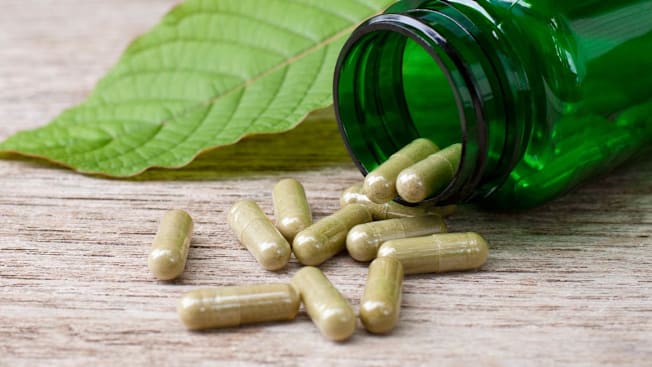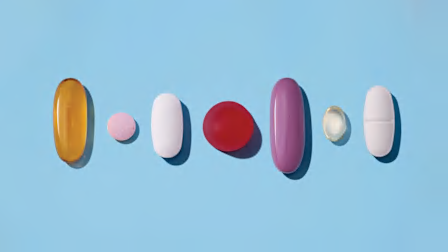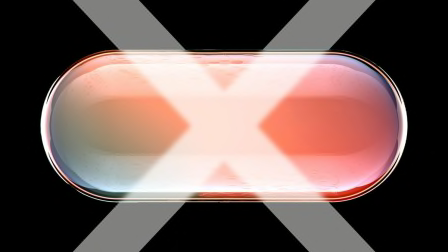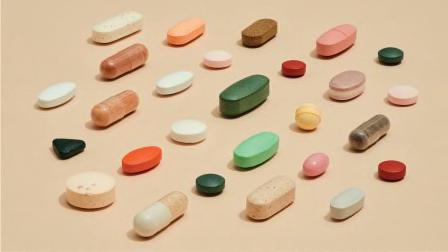What You Should Know About Kratom
Use of this herbal supplement is rising, but so are concerns about its effects

At gas stations, liquor stores, and smoke shops, products containing kratom—an herbal substance—are readily sold alongside energy drinks and gum. These kratom drinks, capsules, gummies, and powders appear innocuous with claims to provide users with a clean energy boost, a mood lift, and better focus.
Kratom has exploded in popularity, with about 9 percent of American adults reporting current use, according to a nationally representative survey published in 2025 in the Journal of Psychoactive Drugs.
What Is Kratom Used For, and Does It Work?
Kratom is made from the leaves of a tropical tree in the coffee family native to Southeast Asia. It produces a caffeine-like stimulant effect in low doses and a sedative effect in high doses.
Generally, people who take kratom regularly do so to achieve specific goals—such as to ease pain or anxiety—rather than recreationally or to simply “get high.”
“Pain is definitely on top of the list. Many people who suffer from chronic pain are taking kratom to avoid taking opioids or because they had a bad experience with opioids,” says Oliver Grundmann, PhD, a clinical professor at the University of Florida College of Pharmacy in Gainesville and lead author of the Journal of Psychoactive Drugs report. “Then we see a large number of people using it for mental health: depression, anxiety, attention deficit hyperactivity disorders, as well as post-traumatic stress disorders.” Others use it to reduce dependence on alcohol or other drugs, or simply for relaxation, stress relief, or an energy boost.
Many kratom users report that the product produces the desired effects. In a small, randomized controlled trial, 26 men were given a drink made from kratom leaf or a placebo. An hour later, their pain tolerance was tested by measuring how long they could keep their hand immersed in an ice bath after reporting feeling pain. The researchers found that those taking kratom had an enhanced ability to withstand pain. Various animal studies have also suggested that it has pain-relieving and stress-mitigating effects. But clinical evidence to support therapeutic use is lacking.
Is Kratom an Opioid?
While kratom is not categorized as an opioid, like heroin and morphine, it can produce opioid-like effects in users, such as relaxation and pain relief.
The leaves contain two major psychoactive ingredients, mitragynine and 7-hydroxymitragynine (7-OH), that attach to the same parts of the brain as opioids, called mu-opioid receptors. However, kratom is what’s known as a partial opioid agonist, meaning that it produces a weaker response in the body compared with traditional opioids, which are full agonists.
“Kratom acts on some of the same receptors as classical opioids like morphine and heroin, except that the overdose risk on kratom is a thousand times less,” says Marc T. Swogger, PhD, a clinical psychologist at the University of Rochester Medical Center in N.Y. “Kratom withdrawal is also substantially less debilitating than withdrawal from classical opioids—however, that doesn’t mean some people don’t really get into trouble with it.”
A small number of deaths have been linked to kratom products, with nearly all cases involving people taking other drugs at the same time or ingesting kratom containing impurities. It appears that fatal overdose from taking kratom leaf alone is extremely rare.
But there’s a big difference between products that contain kratom leaf and products that contain concentrated forms of 7-OH. The relationship between kratom and 7-OH can be thought of as similar to that between poppy flowers and morphine. “7-OH is much more potent than kratom, meaning it takes far less for you to get the same effect, and it’s sold in higher doses,” says Levy. These products may not be clearly or accurately labeled as to their 7-OH content and are sometimes marketed as kratom.
“In the last five to six years, we’ve seen a shift from just dried kratom leaf material to extracts and semi-synthetic derivatives,” says Grundmann. “They are labeled and sold as kratom, but they’re not kratom because they do not contain the same range of compounds that are found in the leaf material.”
Because 7-OH acts like a prescription opioid with a high potential for dependence, there’s a movement to regulate or ban it. In July, the Food and Drug Administration recommended that the Drug Enforcement Agency classify concentrated forms of 7-OH (but not kratom leaf) as a controlled substance, and the DEA is currently reviewing the recommendation. Florida banned 7-OH in August, and later took steps to remove products from gas stations, vape shops, and convenience stores across the state.
Is Kratom Addictive?
Although 7-OH is more likely to cause issues than kratom leaf, dependency is a concern for both. The FDA warns against the use of kratom, and the DEA categorizes kratom as a “drug of concern” whose consumption can lead to psychological and physiological dependence.
Withdrawal symptoms may include insomnia, nausea, vomiting, diarrhea, and muscle pain or spasms. Some people may find it very difficult to quit kratom. A report published in Drug and Alcohol Dependence in 2017 of over 8,000 kratom users found that nearly half experienced withdrawal symptoms within 12 to 48 hours of stopping use.
“As an addiction medicine physician, I have seen a fair amount of kratom use disorder,” says Levy. “Kratom comes with all the risks that other opioids come with, including dependence, addiction, and withdrawal.”
What Are the Other Risks of Using Kratom?
It is unregulated in the U.S. This means that aside from its potential for addiction, there is no guarantee of product quality or accurate labeling, and products may contain varying dosages or even different ingredients than those listed on the label. “Like anything you buy that is unregulated, you don’t actually know what you’re getting,” says Levy.
Kratom products may contain harmful contaminants. These include heavy metals and bacteria that cause illness. For example, a 2024 study that looked at 68 products found that some of them contained excessive concentrations of lead and arsenic. And in 2018, kratom supplements contaminated with salmonella were linked to an outbreak that sickened nearly 200 people.
Kratom may negatively interact with other drugs. There is a possibility of harmful drug interactions between kratom and alcohol, opioids, benzodiazepines, and other substances.
Kratom has some side effects. Roughly 13 percent of individuals reported nausea and 9 percent reported constipation as negative effects from kratom use, according to the 2017 report in Drug and Alcohol Dependence.
Kratom products can contain other active ingredients, which can affect how kratom acts in the body. In particular, Levy mentions the dangers of Feel Free, a product marketed as a natural mood-boosting tonic. Over the summer, warnings spread on TikTok about Feel Free, with many people claiming they took it and became dependent on it. It contains kratom leaf and kava, another plant with relaxation effects, and the combination may have a higher addiction potential than either substance alone. “Mixing those two together is more dangerous and more likely to lead to a use disorder than taking either one alone,” says Levy.
In an email to CR, Botanic Tonics, the company that makes Feel Free, said the product contains botanicals rather than kratom extracts or isolates. The company claimed that “false and misleading statements are being made about Feel Free on social media” and that "social media claims typically come from individuals who admit to consuming far more than the recommended dose." It also pointed to the warning labels on its products and said, “We are clear that we make a powerful product and that it is not intended for everyone. We actively discourage use by anyone with a history of substance abuse, those under 21 years of age, pregnant or nursing women, or anyone who may be sensitive to our active ingredients.”
Is Kratom Legal?
According to the FDA, kratom is not lawfully marketed in the U.S. as a drug product, a dietary supplement, or a food additive in conventional food.
Beyond that, it’s up to states to determine kratom’s legality, because federal law does not classify it as a controlled substance. Six states have banned kratom possession, sale, and use: Alabama, Arkansas, Indiana, Rhode Island, Vermont, and Wisconsin. Eighteen states have placed limitations on the possession, distribution, sale, or manufacture of kratom products, such as age restrictions and labeling requirements.
The rest of the country—a total of 26 states—has placed no limitations on kratom, meaning products are freely accessible online and in stores.
Can Kratom Be Used Safely?
Kratom is not approved as safe or effective for any medical condition. However, some experts believe that its potential for medical use warrants further exploration and rigorous study, even if, at the same time, regulation of kratom products on the market is long overdue. “Banning kratom [leaf] would do more harm than good at a public health level,” says Swogger.
The majority of consumers discover kratom through the internet or social media, and only 3 percent hear about it from a healthcare provider, according to a 2022 report authored by Swogger, Grundmann, and colleagues published in the journal Frontiers in Pharmacology. Because of the risk of addiction and the fact that a product’s potency and purity can’t be guaranteed, taking kratom on your own isn’t a good idea.
“If people do wish to try kratom, it is important to first speak with a trusted physician who knows the research on this plant,” says Swogger. Your doctor may recommend safer, more effective options to treat your condition. And, he says, those already taking kratom can reduce their risk of harm and dependence by using only kratom leaf material—not extracts, concentrates, or isolated compounds like 7-OH—at the lowest dose and the lowest frequency, to achieve the desired effect.




















